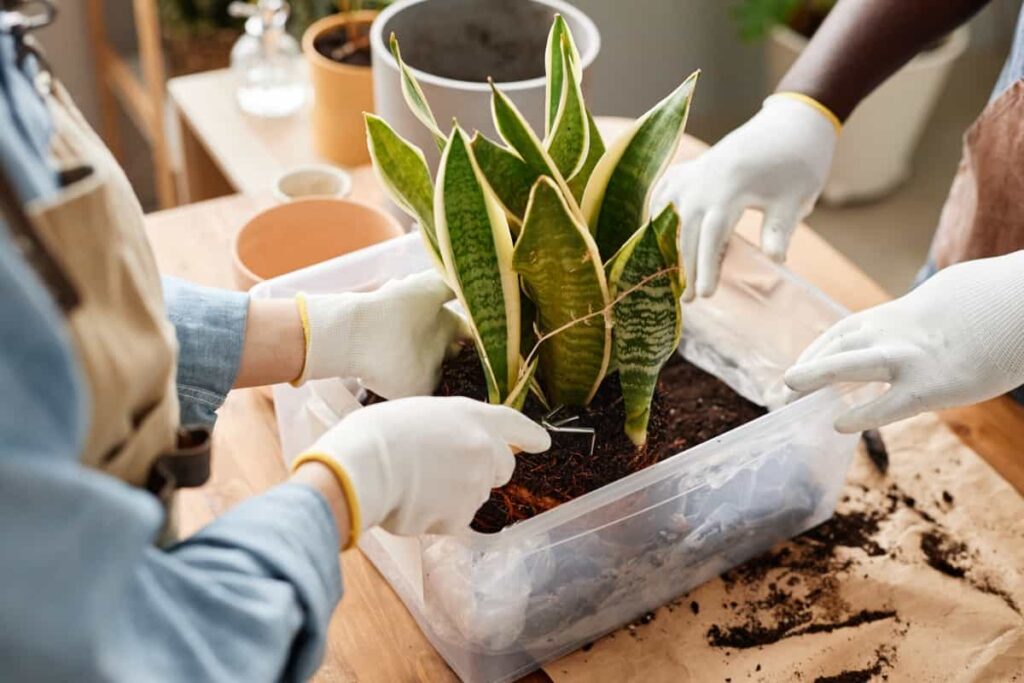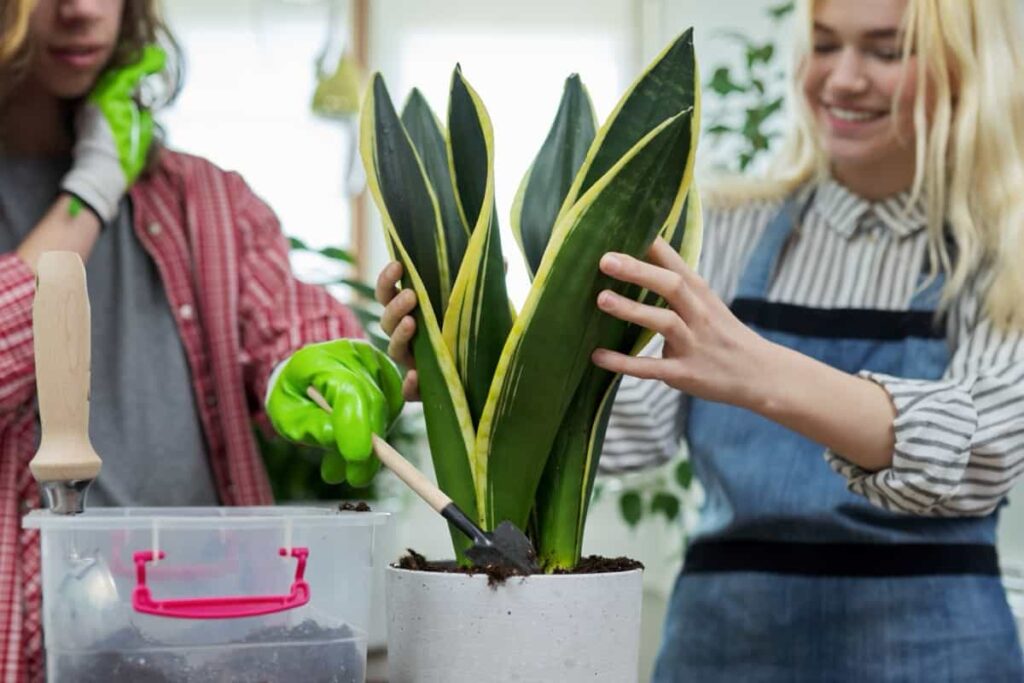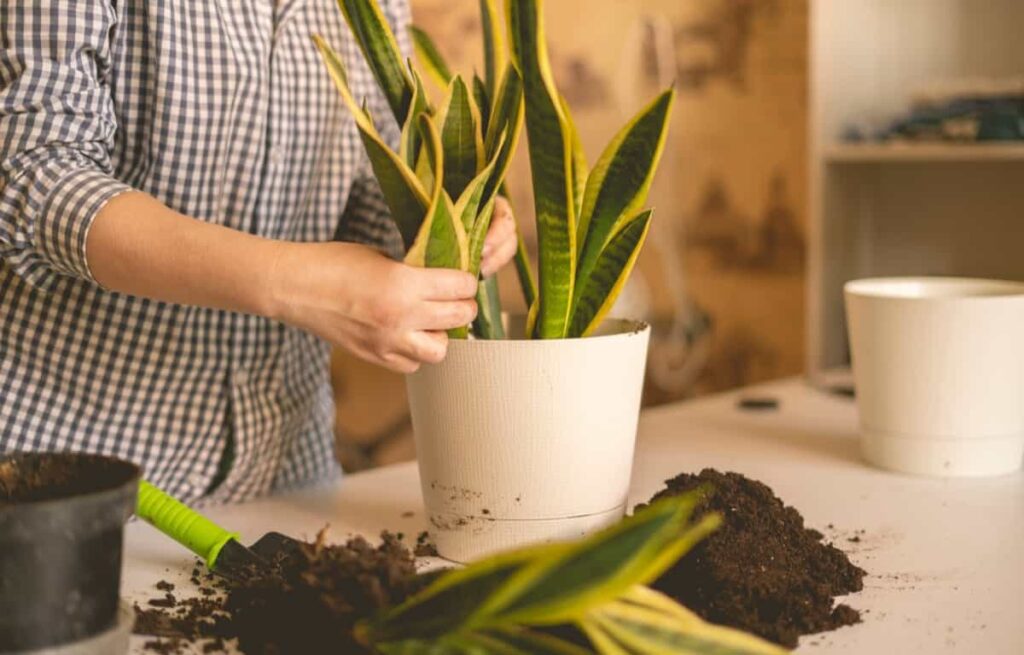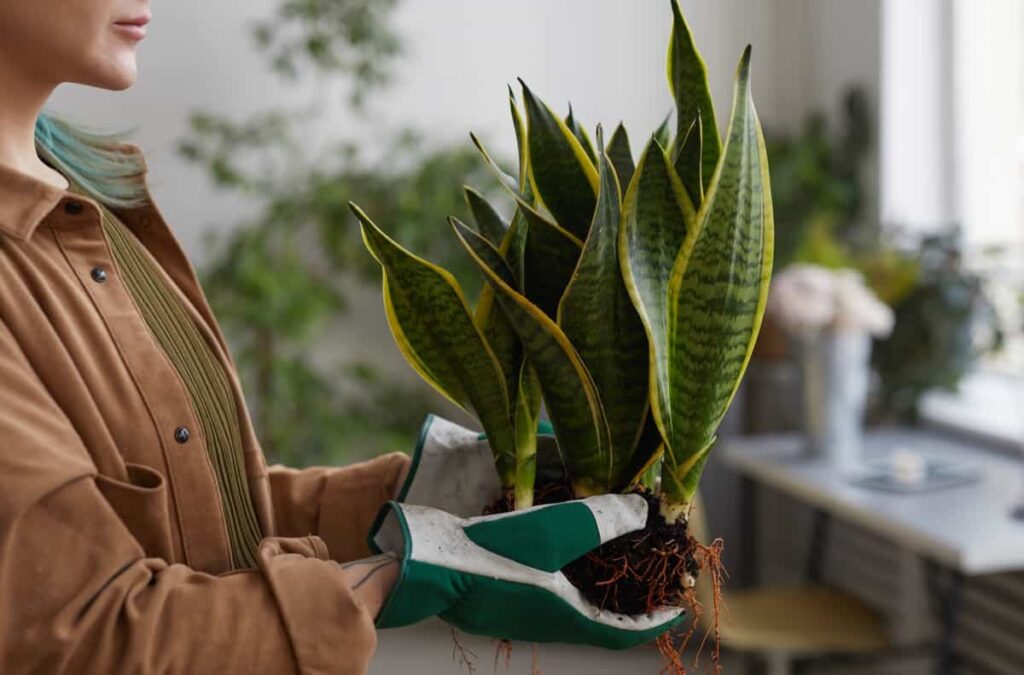Snake plants (Dracaena trifasciata), also known as mother-in-law’s tongue, are able to adapt to various conditions. However, they still require special care during winter to ensure their health and vitality. During winter, Snake plants go into a period of dormancy where their growth slows down significantly. This makes it crucial to ensure that they receive adequate care to prevent any stress or damage. By taking proactive measures, you can help your Snake plant thrive throughout the winter season.

Snake Plant Care in Winter
Choosing the Right Snake Plant for Winter Care
The popular Snake plant variety for winter is the Sansevieria trifasciata, also known as the “Mother-in-law’s tongue” or “Snake Plant.” This variety is known for its ability to make it an ideal choice for winter care. Another option to consider is the Sansevieria cylindrica, commonly called the “Cylindrical Snake Plant.” It needs minimal maintenance and can thrive in low-light conditions. The Sansevieria laurentii variety is also well-grown in winter.
Providing Adequate Light in Winter
During the winter months, when daylight hours are shorter and natural sunlight is limited, it’s crucial to ensure that your Snake plant receives enough light to thrive. These plants are typically low-light tolerant but still require a moderate amount of indirect or filtered light to maintain their health. To provide adequate light for your Snake plant, place it near a north-facing window.
If a north-facing window is not available, you can also position your plant near an east or west-facing window, making sure to shield it from direct sun rays. If natural light is scarce in your home during winter, consider using artificial grow lights. Remember to rotate your Snake plant every few weeks so that all sides receive exposure to light equally. This will prevent the leaves from bending towards the source of light and promote even growth.
Maintaining Ideal Temperature and Humidity
Snake plants are native to tropical areas, so they thrive in warm and humid environments. To provide the ideal temperature for your Snake Plant, keep it away from cold drafts or areas with fluctuating temperatures. Aim for a temperature range of 15-29°C during the day and slightly cooler at night. Avoid placing your plant near windows or doors that may expose it to chilly air. Humidity is equally important for Snake Plants, as they prefer higher levels of humidity.
Watering Your Snake Plant
Although these plants are known for their ability to withstand drought, it’s important to strike the right balance to watering during the colder months. The main tip for watering your Snake plant in winter is to avoid overwatering. The soil should be allowed to dry out between waterings, as excessive moisture can be affected by root rot.
In general, water the Snake plant only when the top inch or two of soil feels completely dry. Another important consideration is the frequency of watering. In general, Snake plants require less frequent watering during winter compared to other seasons. This is because they experience slower growth and reduced water requirements in lower light and cooler temperatures.
When you do water your Snake plant, make sure not to let it sit in standing water. Ensure that there are drainage holes at the pot bottom and that any excess water drains away promptly. In addition, using room temperature or slightly lukewarm water can help prevent shock and stress on the plant’s roots during winter months.
Fertilizing Your Snake Plant in Winter
During winter, when growth slows down, you should reduce the frequency of fertilization. Aim to fertilize your Snake plant every two to three months instead of monthly. This will prevent over-fertilization and allow the plant to adjust to its dormant state. For selecting a fertilizer for your Snake plant, choose a balanced formula specifically designed for indoor plants.
In case you missed it: How to Propagate Snake Plants: A Step-by-Step Guide

These types of fertilizers provide essential nutrients like nitrogen, phosphorus, and potassium in appropriate ratios that promote healthy growth. When applying the fertilizer, follow the instructions provided on the packaging carefully. Over-fertilizing the Snake plant can lead to salt buildup in the soil, but it helps your plants’ health.
Pruning and Repotting Your Snake Plant
Pruning helps maintain the plant’s shape and promotes healthy growth, while repotting ensures that your Snake plant has adequate space to thrive. It’s important to remove any dead or yellowing leaves. These can be unsightly and indicate an underlying issue with the plant’s health. Use sharp, clean scissors or shears to make precise cuts at the base of each leaf.
Repotting should be done every 2-3 years or when your Snake plant starts outgrowing its current pot. During winter, it’s best to avoid heavy pruning or repotting unless necessary, as these activities can put additional stress on plants already dealing with lower light levels and cooler temperatures. Instead, focus on maintaining a stable environment for your Snake plant by providing adequate light, temperature control, and proper watering.
Pest and Disease Prevention
One effective method of pest prevention is regularly inspecting your plant for any signs of insects or diseases. Look Snake plant closely at the leaves, stems, and soil surface for any unusual spots, discoloration, or webbing. If you spot anything suspicious, take immediate action to address the issue.
Another key aspect of pest prevention is providing adequate air circulation around your Snake plant. Good airflow can help deter pests and keep them from settling on your plant. Furthermore, consider using natural pest control methods such as insecticidal soap if necessary. These organic solutions are safe for both your Snake plant and the environment.
Providing Adequate Air Circulation
Air circulation is essential for the plant health, especially during winter. Proper air movement helps prevent the growth of mold, bacteria, and fungus that can harm your plant. Additionally, it aids in regulating temperature and humidity levels. To ensure adequate air circulation around your Snake plant, consider placing it in a well-ventilated area. Avoid positioning it near drafts or vents that could cause fluctuations in temperature.
If you notice stagnant air around your plant, gently move its leaves or use a small fan to promote airflow. This prevents moisture buildup on the leaves and reduces the risk of pests infesting your beloved Snake plant. Remember not to overcrowd your indoor space with too many plants, as this can impede proper air circulation. Allow enough room between each plant to allow for optimal airflow.
In case you missed it: How to Grow Snake Plants: A Guide to Planting and Care

Regularly Inspecting Your Snake Plant
By taking the time to observe your plant closely, you can catch any potential issues early on and address them before they become major problems. If you notice any pests, take immediate action by using natural pest control methods or seeking advice from a gardening professional. Inspecting your Snake plant also allows you to check for any disease signs. Look for yellowing leaves, wilting foliage, or soft spots on the stems. If you spot any of these symptoms, it may indicate that there is an underlying issue with watering or drainage.
Frequently Asked Questions (FAQ) on Snake Plant Care in Winter
Is Humidity an Issue for Snake Plants in Winter?
Unlike many other houseplants, Snake plants are quite tolerant of low humidity levels commonly found indoors during wintertime. They naturally originate from arid regions and don’t require any additional humidity adjustments.
Can I Fertilize My Snake Plant During Winter?
In general, it’s best to avoid fertilizing your Snake plant during its dormant period in winter. Fertilizer promotes growth, which is not ideal when the Snake plant is conserving energy and focusing on survival rather than new shoots or foliage development.
How Often Should I Fertilize My Snake Plants in Winter?
Snake plants typically don’t require frequent fertilization, especially during the dormant period in winter. It’s generally recommended to suspend fertilizing altogether during this time since they are not actively growing.
In case you missed it: How to Grow Walnut Tree at Home: Propagation, Planting, Pollination, and Care

Conclusion
During the winter months, Snake plant care becomes even more crucial for ensuring the health and well-being of your beloved plant. While it may seem like an added responsibility, taking care of your Snake plant during this season offers numerous benefits. Additionally, caring for your Snake plant in winter allows it to continue purifying the air in your home.
- Management Pests and Diseases in Your Cotton Field
- Sheep Farming Business Plan for Beginners
- Aquaponic Farming at Home: A Step-By-Step Guide
- Profitable Village Farming Business Ideas in 2024
- High-Yield Aquaculture: Fast-Growing Fish for Farming
- Effective Fish Pond Construction Techniques for Beginners
- Irrigation and Water Management in Pineapple Farming
- Blossom to Harvest: Mastering Flowering and Pollination in Papaya Farming
- Pig Fattening Essentials: From Selection to Sale for Beginners
